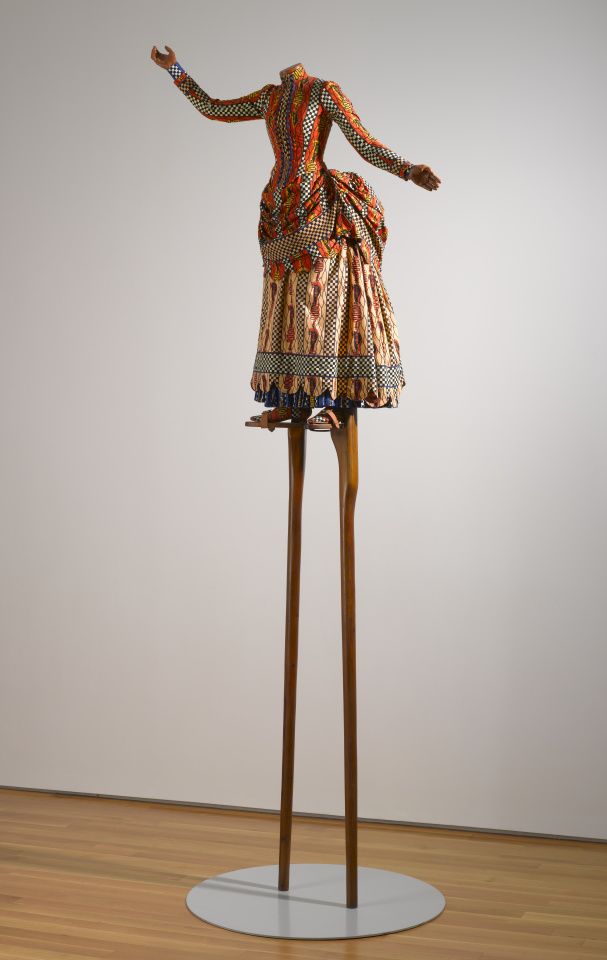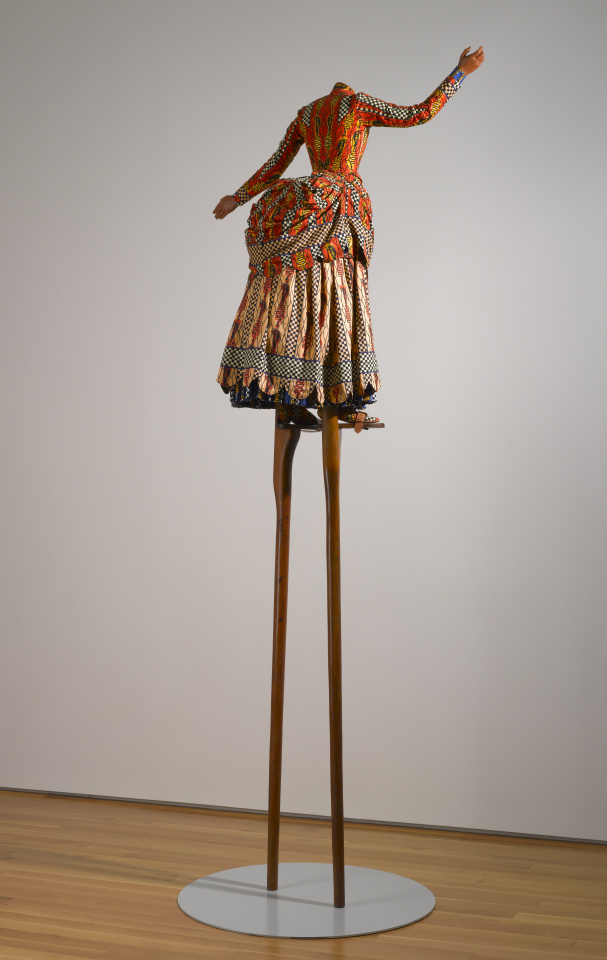Eleanor Hewitt (work of art)
Información sobre la obra de arte
Ideas clave sobre esta obra de arte
- A headless mannequin wearing a Victorian-era dress made from Dutch wax print cloth balances on a pair of six-foot-tall wooden stilts. According to an interview with the artist, the headless mannequin is a reference to the execution (by beheading) of nobility during the French Revolution.
- The sculpture’s title is a reference to Eleanor Hewitt, one of the founders of the Cooper Hewitt museum. She and her sister founded the earliest version of the museum as a study collection for students. They built the collection from objects they purchased during their travels and donations from wealthy friends and manufacturers. The stilts represent Eleanor Hewitt’s privilege to travel and the artist’s view of the unjust power she exerted over the people she visited.
- Dutch wax print cloth was primarily produced in and sold throughout the Netherlands, Indonesia, and Africa. Shonibare’s use of this cloth in his sculpture is a commentary on his own diasporic identity as an artist born in London and raised in Lagos, Nigeria. African diasporas refer to the dispersion of African people around the world as a result of the slave trade.
Más información
Eleanor Hewitt was a 19th-century art collector who traveled throughout Europe extensively. The objects she and her sister collected while traveling are now in the collection of Cooper Hewitt, Smithsonian Design Museum in New York. The headless figure depicted by this sculpture is supported on wooden stilts and is dressed in a late Victorian-era dress made from Dutch wax-printed cotton fabric.
By elevating the figure on stilts so that she towers above the viewer, the artist uses Hewitt as a symbol of Western countries and their legacy of imperialism and colonialism.
Yinka Shonibare is known for his sculptural figures dressed in 19th-century costumes. He describes the Dutch wax cloth worn by figures such as Eleanor Hewitt as follows:
The fabrics I use also look like they could be just African, because they are used a lot there. But what you see on the surface is not really what you always get. The fabric has a complicated history in its trade routes: It was originally designed as an Indonesian fabric, produced by the Dutch, and the British sold it into the African market. It’s a perfect metaphor for multilayered identities.
Shonibare’s work often challenges viewers’ perceptions of cultural identity. His work explores power, examines the achievements and failures of Western civilization, and creates connections between diverse histories and cultures.
tags: culture, fashion, history, meaning, place
Recursos adicionales
Recursos para los profesores:
- Vea un vídeo sobre Shonibare y el colonialismo.
- Vea un vídeo del artista hablando de su obra.
- Read an article about the history of Dutch wax cloth.
Recursos para los estudiantes:
- Leer más sobre el artista.
- Learn more about wax print cloth.
- Watch a video to discover how wax print cloth is made.


